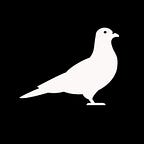Following Fab and flatpack
Between 2010 and 2013 Jason Goldberg transformed Fab.com from a social network for gay men into a flash sale website with 10 million members, selling seven million products in three years. In September last year, Goldberg launched a new business, Hem. Another e-commerce business; this time selling upmarket but affordable, customisable furniture.
1. At Christmas 2012, the top selling products on Fab were a vibrator, a cat scratching DJ set and a beardie ski mask. It was a snapshot of everything that was good and troublesome for a runaway e-commerce success story. The quirky products were behind explosive sales (£20m in Fab’s first six months and £115m over the first year), but were a far cry from Goldberg’s original design-driven vision.
‘It became hard to keep pace and keep the quality. It was a mad growth train. It was at this point we interrogated the business and felt there was a higher margin business in selling our own products, especially linked to design and the home. So, we spun off a new company, Hem.’
2. ‘We saw a problem with Ikea. Although amazing, all of its customers hope to move on to something better at some point.’ The perception of this flaw in Ikea’s model formed a critical pillar for his new business. ‘We built heavily around this modern aspiration insight,’ he says. ‘The furniture market is like a big pyramid with one giant [Ikea] dominating almost all of it, leaving the luxury Italian design brands with a sliver at the top.’The experience with Fab, customisable products made by renowned designers, will, Goldberg hopes, make Hem ‘more relevant’ than the ubiquity of Ikea and the rarified world of luxury furniture.
3. Danish design firm One Nordic approached Goldberg for investment. He responded by acquiring the company. Goldberg had tracked One Nordic while he was busy building Fab, and even had one of its lamps in his flat. The Danish owners had reached the limits of expansion through their existing business model and wanted external investment. ‘We realised we were looking at the same problems in the industry, and had the same language around ‘user experience’ and it quickly became apparent One Nordic was the missing ingredient in our business.’
4. ‘We’re going to launch Hem in 90 days, and we’re going to make it live in 34 countries, in three different languages’. Goldberg made this ballsy statement to his team in June last year, not long after the Hem business plan was finalised. He also wanted customers in any of those 34 countries to receive a Hem product in seven days from ordering.‘I knew 99% of our staff would think it was crazy. It was audacious but achievable. I knew the abilities of our team and our technology. We’d built a ton of technology, warehousing and software around inventory e-commerce and operations in four years. I felt it was important to set a pace and tone, and, crucially, just get in front of customers as fast as possible. I knew mistakes we would make in those 90 days wouldn’t be fatal; they would be mistakes that would allow us to learn rapidly and fix.’
5. Hem convinced Luca Nichetto, a highly rated young designer, to design a product when the company was little more than an idea. Goldberg had been introduced to Nichetto by Hem’s design chief Petrus Palmér. The three were attending a dinner at Bruno Loubet in Clerkenwell during last year’s London Design Festival. After they were outlining the vision for Hem, Nichetto produced his iPad to show them a lamp he was already working on that fitted their brief. ‘It needed online configurators and had mix and match components, and was something we could ship around the world. A year later, we’re launching that lamp as part of our Alphabeta range. ‘We found a great Italian factory, and worked out how to sell a billion or so combinations around the world. It’s our flagship product and sets the tone for what we’re trying to do.’
